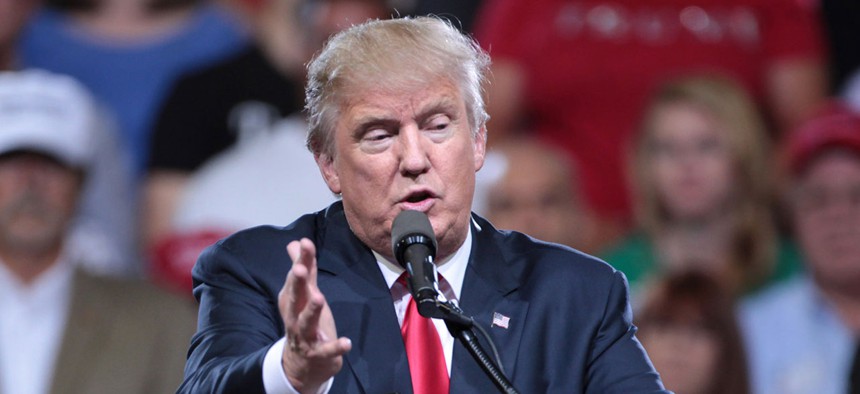
Flickr user Gage Skidmore
Donald Trump’s Infrastructure Plan Won’t Work While He’s President
How comfortable will he be with delayed gratification?
One of the first rules you learn in economics is there is no free lunch. But for the last several years many economists made an exception when it came to infrastructure spending. Interest rates have been so low that the potential long-term national economic benefit from improving US infrastructure, such as roads, airports, bridges, and internet access, could easily outweigh the cost of borrowing money to do it. (Former US Treasury secretary Larry Summers nicely laid out that calculus here.)
Now US president-elect Donald Trump is pushing forward with infrastructure plans rooted in such analysis. But there are two vitally important wrinkles to the argument to consider:
- The right kind of infrastructure spending will take several years to have any perceptible economic impact; there is no instant gratification here, given the nature of projects and the current low level of US unemployment.
- Interest rates are rising in anticipation of such spending, making borrowing to fund it more expensive.
The result is that the projects will ultimately cost more and, if the right projects are selected, any economic benefits will take longer to arrive.
Solid infrastructure provides the foundation for growth for years to come. Where things get controversial is the question of whether all infrastructure projects—even those that offer little or no economic value directly in that way—increase economic growth just by putting to work people and resources that would otherwise languish.
Do the projects matter?
During the height of the last recession, some economists argued that pretty much any public-works project would boost the economy—even digging and refilling a hole. Economist are sharply divided on whether that’s actually true. But many agree that when the economy is at near-full capacity (as it is now), spending government money on useless projects doesn’t really turbocharge the economy and only increases deficits.
One reason why is that unemployment is low right now and there are not many people who need an infrastructure job. True, it could be argued that unemployment may be low, but lots of people still need work. Labor-force participation still hasn’t recovered because many Americans dropped out of the labor force and, as research has documented, take pain medication. But it’s not clear that infrastructure spending would help them. Working on infrastructure projects takes technical know-how, and many members of the long-term unemployed probably don’t have the skills necessary to build a high-speed railroad.
If they do matter, how do we pick them?
Picking the right projects is hard and often comes down to political favors. That is one reason why most infrastructure spending is left to state governments (they may be more aware of local needs, though are also subject to political capture). Trump’s advisors advocate letting the private sector pick the projects by offering them favorable tax incentives. But there is concern that the most economically valuable projects take years, even decades, to pay off. The private sector can’t wait that long for a return on its investments.
Timing is a problem
The projects that provide the most value aren’t “shovel-ready,” Nobel-prize winning economist Joe Stiglitz pointed out during a recent panel discussion at Columbia’s School of International and Public Affairs. It will take a few years to identify and plan for them. And even if those projects do provide the foundation for long-term growth, they may harm the economy in the short run.
On the same panel Columbia University and PIMCO economist Richard Clarida explained that markets will anticipate a big increase in spending and interest rates will go up right away (they did with news of a Trump victory). Higher interest rates will make other kinds of investment more expensive and can dampen growth. Meanwhile, the benefits of the infrastructure projects won’t appear for several years.
It seems how well Trump’s infrastructure plan will work will depend on how patient he is. Given the state of the economy, boosting economic growth will require picking useful infrastructure projects. They have the potential to boost America’s productive capacity for years to come. They might also leave a powerful legacy (imagine the Trump dam or Donald Trump bridge). But odds are those kinds of projects won’t confer much economic benefit, only cost, during his reign as president. And just how comfortable will Trump and his administration be with delayed gratification?
(Image via Flickr user Gage Skidmore)






